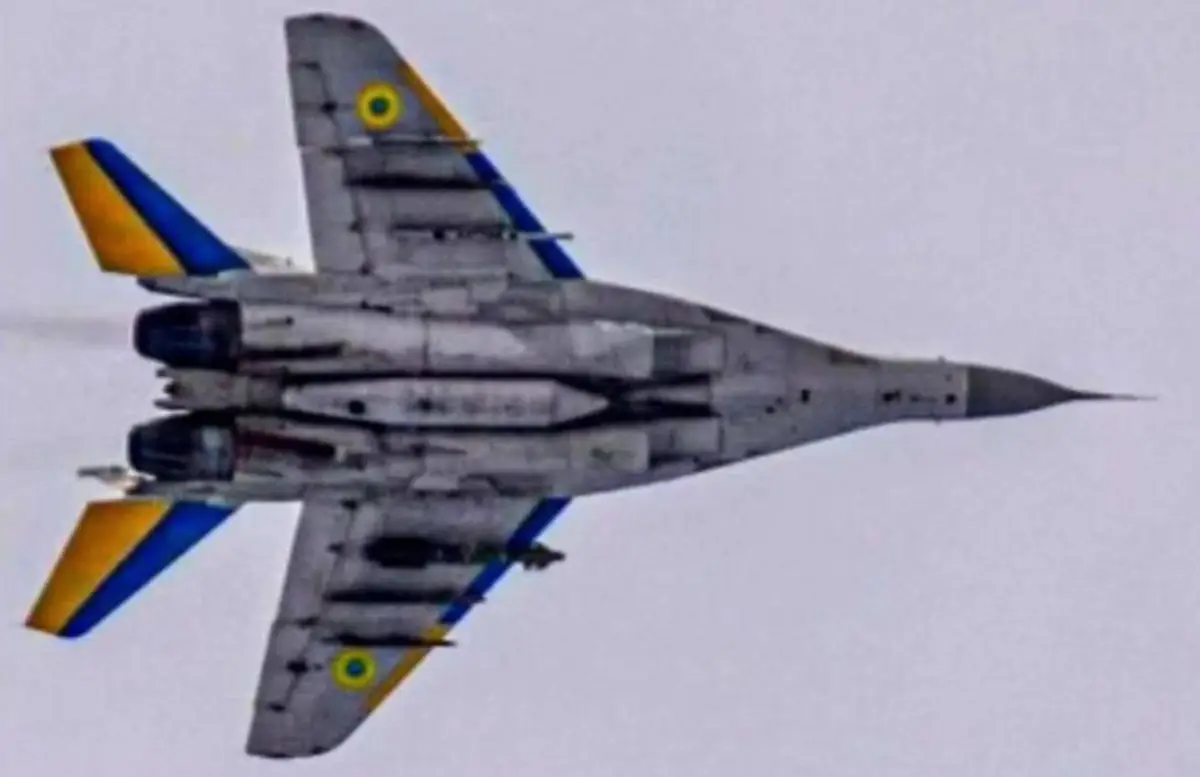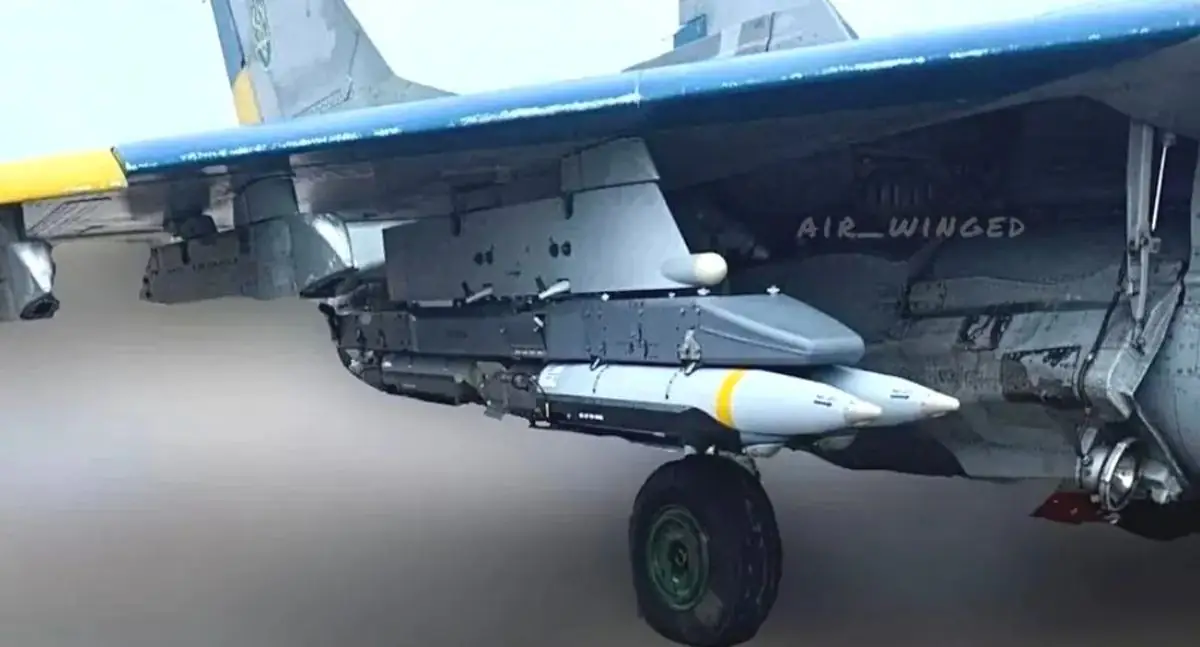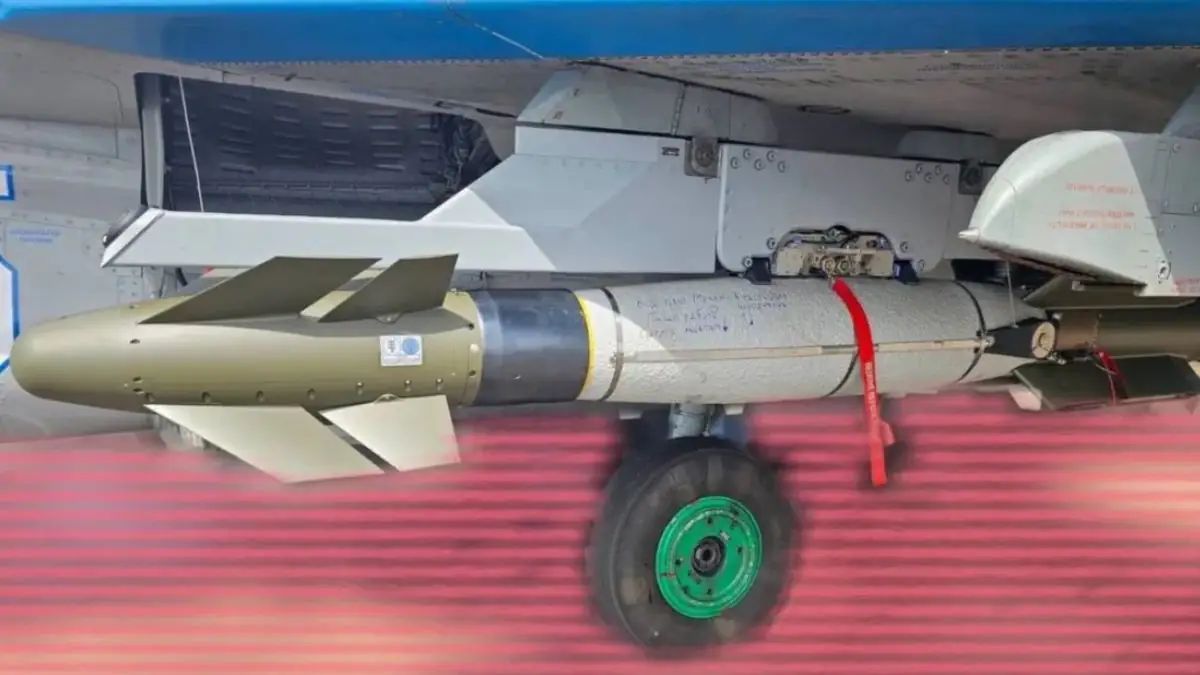The best image to date of the French AASM-250 Hammer bomb under the wing of a Ukrainian MiG-29 has surfaced online, revealing that the precision-guided bomb with a rocket motor is mounted using a special pylon. The pylon holding the Hammer has a similar overall shape to those used by Ukrainian MiG-29s for JDAM-ER cluster bombs, which appear to be designed to send signals to GPS-guided systems.
The new photo of the MiG-29 with the AASM-250 Hammer on a special pylon was shown today, but the exact location and photographer remain unknown. In January, French authorities announced their plan to transfer AASM-250 bombs to Ukraine, and since then, they have been spotted on both MiG-29s and, reportedly, on Su-27s as well. Additionally, the Ukrainian Air Force mentioned that the Hammer has been integrated into Su-25 attack aircraft.

The Hammer is a kit designed for standard bombs of various sizes, consisting of a guidance section attached to the front and a range extension kit containing a rocket motor installed at the tail. According to its manufacturer, Safran, the 250-kilogram AASM-250 versions supplied to Ukraine can strike targets at a distance of up to 70 km, or even further.
Safran offers several guidance options for the Hammer, but the model shown in the new photo appears to have a basic nose section equipped with an Inertial Navigation System (INS) supported by GPS. The bomb used as the warhead for this munition also features thermal protection coating.
The pylon to which the Hammer is attached features a noticeable protrusion with a black antenna at the end. It closely resembles the one previously seen on another Ukrainian MiG-29 equipped with the JDAM-ER. This system also uses GPS-guided targeting, and the design of the pylon is related to the requirement of targeting before the release of the bomb.
“JDAM-ER uses a GPS-aided inertial navigation system guidance package to hit a specific set of coordinates. These coordinates can be pre-loaded into the bomb while on the ground, or the pilot can program them in-flight, provided the necessary data transmission channels and user interfaces are available. The method of obtaining these coordinates can vary.”
Ukrainian MiG-29 and Su-27 aircraft do not have the GPS/INS system or NATO-compatible data transfer bus required for JDAM-ER. Therefore, the element at the end of the pylon might be a GPS antenna, which transmits critical information to the bombs before launch. Mounting it on an extension ensures direct line-of-sight to satellites. This setup allows Ukrainian pilots to use JDAM-ER without significant degradation in its capabilities and without requiring complex integration work.

All of this also applies to the Hammer system and what will be necessary for its integration into Ukrainian fighter jets. It has been revealed that the integration of American precision munitions on Ukrainian aircraft involves the use of specialized control systems in the pilots’ cockpits. This further highlights the use of more autonomous solutions to bypass the limitations of Soviet-era aircraft.

Last month, a photo surfaced showing another mysterious pylon under the wing of a different Ukrainian MiG-29, featuring a white-colored antenna or sensor at the front. This component is likely part of an electronic warfare (EW) system. The pylon was used to attach Small Diameter Bombs (SDB) GBU-39/B to the aircraft. These bombs also utilize GPS guidance, but in this case, the white mounting on the pylon is positioned lower under the wing.
🇺🇦 Ukrainian F-16s is finally here, no more guessing, no more photoshops, It's real pic.twitter.com/nrXaS1hF7W
— Fighterman_FFRC (@Fighterman_FFRC) August 4, 2024
The first batch of F-16AM Viper jets recently received by Ukraine includes models equipped with pylons integrated with missile warning sensors. However, unlike the specialized pylons installed on Ukrainian aircraft, these American fighters do not require such modifications. The Viper can serve as a platform for launching AGM-88 HARM missiles and ADM-160 MALD decoys, with the potential to integrate other Western munitions like the Hammer in the future.
Source: twz








